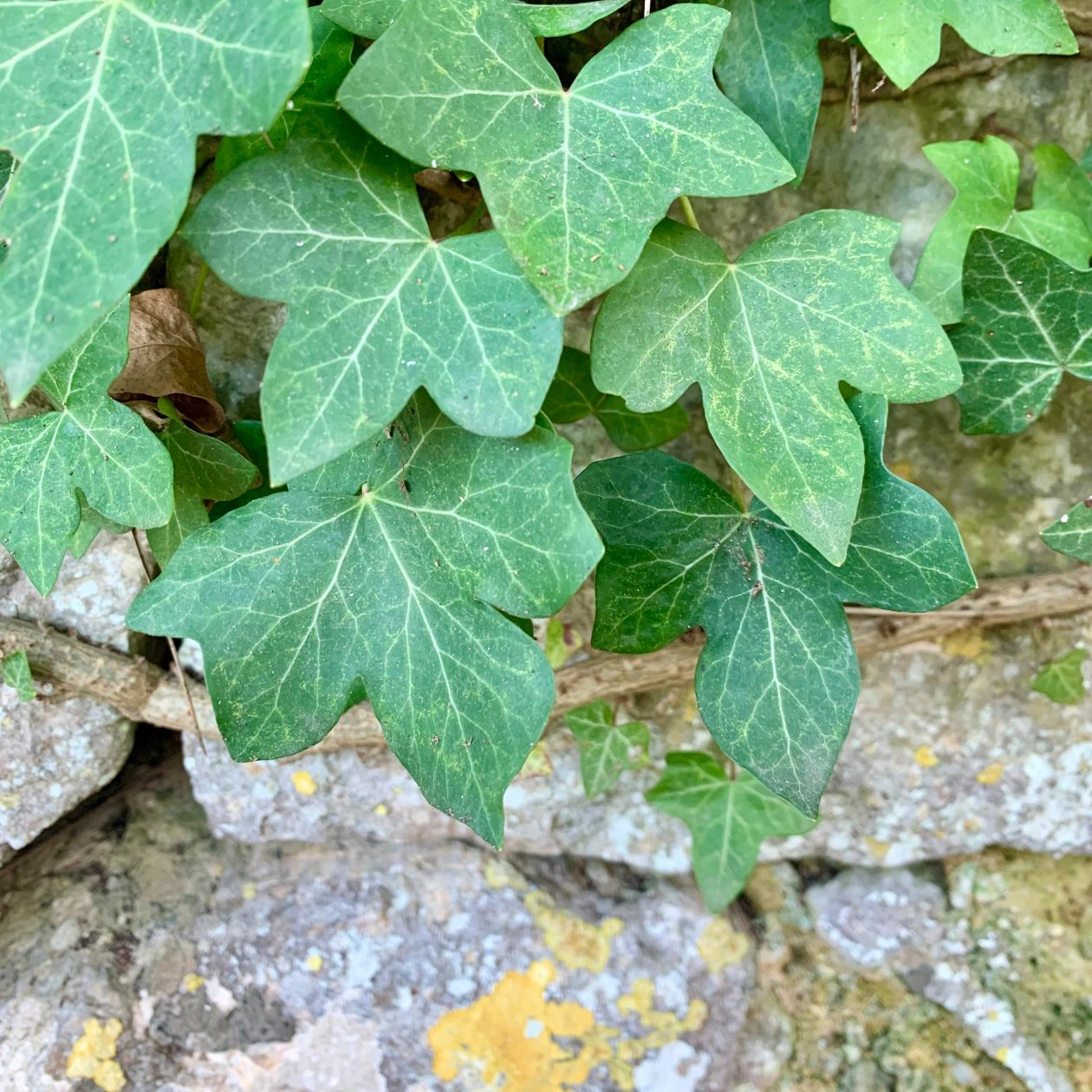PLANT OF THE MONTH – JANUARY 2025: Hedera helix L.
Ca: Heura
Es: Hiedra
En: Ivy
Scientific name: Hedera helix L.
Synonyms:
Ivy is a very well-known plant, as it is a part of our garden culture, covering walls, fences, and buildings. It is a true climber, with adventitious roots along its branches, which allow it to climb and form ground covers in many shady places throughout our Islands, reaching heights of more than 30 meters and developing large, robust stems.
Its leathery leaves are rhomboidal on the fertile branches and palm-shaped on the rest of the plant. The flowers form umbels and are major nectar producers. The fruits, which turn black when mature, are a food source for many birds, which are also the main dispersers of the plant.
The Hedera genus comprises 19 species distributed throughout Europe, the Macaronesian islands, North Africa, and temperate Asia. In the Iberian Peninsula, there are three species of ivy, while in the Balearic Islands, two species can be found: H. helix and H. rhizomatifera (an endemic species of the Iberian Peninsula and Mallorca). There are many hybrids and intermediate forms between different species, making its taxonomy complex. A morphological feature that differentiates the taxa is the trichomes (hair-like structures) on the young leaves and sterile shoots, which can be observed with a magnifying glass.
In pharmacy, ivy is used to make syrups with mucolytic and expectorant effects for cases of productive cough.
In the Botanic Garden, it can be found forming hedges along the main path and covering some walls. We prevent it from invading the trunks of the fasers (a tree species) and any other trees.
Family: Araliaceae
Distribution: In the Balearic Islands, it can be found on all the islands, but it is most abundant in the Sierra de Tramuntana.
IUCN Category:
Phenology: Flowers from September and fruits in the autumn.
Habitat: Shady areas, in mountain caves and oak forests, climbing on walls, tree trunks, or creeping along the ground.
